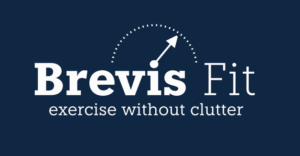Introduction
“How often do you work out?” is a very frequently uttered question, to individuals that look to be in good physical shape. It is a fascinating question since it assumes that frequency is the most important aspect of an exercise program. And while frequency is important, it is only a byproduct of our exercise intensity, volume, and our innate ability to recover from stress.
The interplay between Intensity, Volume, and Frequency
Previously, we have already tackled and defined both concepts of Intensity [1], [2], and volume [3]. Both of them are tightly related and dependent on each other and strongly influence the frequency aspect as well.
Exercise frequency defines the total amount of Workouts we perform in a period of time.
EXERCISE INTENSITY IS THE STIMULUS
The most essential element of Exercise is its Intensity. This, in the short term, defines how much exercise volume we can tolerate per workout. Together, Intensity times the total workout volume defines how much time we need to recover from each workout.
EXERCISE VOLUME IS THE TOTAL CUMULATED STRESS
The exercise intensity needs to be high enough. Every successful high-intensity set of effort, however, reduces our momentary ability to resist stress and perform work. Therefore, for each additional high-intensity set in our workout, we reduce the average intensity level per set. This makes sets at the end of our workout less efficient at producing stressful stimuli. Additionally, the added work also deepens systemic fatigue, which increases our recovery time.
EXERCISE FREQUENCY IS THE EXPOSURE RATE
In order to reach our physical potential, we would want to exercise as frequently as possible. Therefore, the shorter the recovery, the more workouts we can perform, and the faster we will reach our genetic potential.
LOCAL AND SYSTEMIC FATIGUE
The length of the recovery period is determined by three factors: local muscular fatigue, systemic fatigue of the whole nervous system, and our recovery ability (a genetic and environmental trait).
A particular workout can have a specific level of local and systemic fatigue. Both of these require separate recovery processes to be completed, to allow new adaptations to manifest [4].
TAPERING VOLUME AND FREQUENCY
For reasons mentioned above, it is very important to taper our exercise volume and frequency. And since there is a minimum amount of intensity (point of momentary muscular failure) and volume required (at least one set), it is the exercise frequency that we need to adjust the most.
Low Intensity High Volume
In a long-distance run, we are active for a long duration, but the intensity level is low for the most part.
High Intensity Low Volume
Because of high intensity, we can endure sprinting for a very short duration.
The Fallacy of Counting Workouts Per Week
For practical reasons of having a 7-day work week, we would usually count the exercise frequency in the manner of workouts per week. For example, John works out on Monday, Tuesday, and Friday, i.e. 3 times per week. Since we schedule our activities around our daily and weekly agenda, it makes practical sense for John to work out around his regular workweek.
BIOLOGICAL RHYTHM
However, our biology does not really care about our workdays and weekends. There is no reason (from the biological perspective) to do our workouts on workdays and rest for the weekend. In that regard, a more precise (and more appropriate) approach to register and monitor our Exercise frequency would be through the number of days between workouts.
THE CALENDAR VERSUS THE BIOLOGICAL CLOCK
For instance, John could work out with two days of rest. So he would do a workout every third day (Monday, Thursday, Sunday, Wednesday, Saturday, etc.). This would make John perform (on average) 10 workouts per month, compared to 12 to the first example, and would give every workout a similar amount of time to recover from.
COUNTING DAYS BETWEEN WORKOUTS, INSTEAD OF NUMBER WORKOUTS PER WEEK
Lastly, our biological rhythms relate to hourly, daily, monthly, and yearly time periods [5] and not to a weekly cycle (even though some argue that the weekly period has biological origins as well [6]). Looking at exercise recovery through those intervals is, therefore, more proficient and correlated with our biology compared to the weekly scheduling of our work, which seems to have more social than biological origins [6].
Intensity comes first, Volume and Frequency follow
When we start an exercise program, we need to know our end goal or purpose. This will correctly determine, what kind of workout schedule we require and what kind of lifestyle changes we will need to adopt in order to make the schedule a success.
are you payed to eat, sleep and exercise?
Some of us want to compete as professional physique athletes and will be paid to do so. Eating, sleeping, and exercising is our job, 24/7. In that regard, our ability to recover will be better, and we will be able to exercise intensely multiple times per week (even though maybe for a few months only, after which a longer rest period will be required).
PRIORITIES, REGULAR LIFE, and LESS IDEAL ENVIRONMENTS
On the other hand, we might be a 40-year-old software developer, having a family and dealing with occasional pain in the back, and a lack of energy after work. While we would not want to compromise our work and time invested with other hobbies and family, we understand that good physical health is the key to our longevity. In that regard, exercising once every 4 – 7 days is all we can practically do and are also physically capable of.
focus on intensity
No matter the situation, however, the intensity of our Exercise is the first aspect we need to take care of and crank up. It is only high levels of intensity, i.e. establishing deep levels of muscular fatigue, that will promote positive changes in our skeletomuscular system.
VOLUME AND FREQUENCY come as a consequence
The volume and frequency on the other hand follow as a consequence. It mainly is decided by the following lifestyle and physiological factors:
- specificity of targeting particular muscles (specific need in a sport, profession, or general body improvement),
- available time and dedication,
- energy levels for exercising at a particular time (for instance, am I exhausted after coming from work, can I afford naps and frequent rest on a daily schedule, how demanding (mentally, and or physically) is my job, etc.).
Finding the Optimal Frequency
As with many things, we want to find an optimal way or path to succeed in the mission. With Exercise, finding the most appropriate frequency optimizes the number of productive workouts we can do throughout a period of time. More productive workouts, more positive adaptations, and faster progress.
FREQUENCY IS TAPERED TO THE INDIVIDUAL
Frequency is prescribed individually, as there are many variables that will influence how fast you can recover and how much physical stress your body can tolerate. Still, as we mentioned above, we should always first focus on the intensity of effort and really work at being proficient to achieve a high level of muscular fatigue.
EXERCISE RELATED GOALS AND OUR LIFESTYLE
Later, to determine the optimal frequency, it is about adding our exercise goals which we combine with our daily lifestyle. Our diet, sleep patterns, and fatigue (physical and/or mental) all play a large part in determining how much exercise we can tolerate. Because these vary amongst individuals, it is hard to provide a generic prescription for exercise frequency.
START WITH 3 DAYS OF REST BETWEEN WORKOUTS
However, at BrevisFit, we do recommend first start with 2 workouts per week or a workout every third day, especially if you are starting out without professional coaching supervision.
Through time and many workouts, you will be able to put more effort into each set of an exercise, which will make you more efficient at fatiguing your muscles and nervous system. This will in one way reduce your time spent exercising, but it will also increase the time needed to recover.
Adjusting volume and frequency - The essential role of measuring progress
What happens when we grow bigger and stronger, is that our muscles are able to deal with much more challenging demands. But while the strength increase can reach above 200%, our nervous system stays more or less the same. In that regard, the stronger and more efficient we are at fatiguing our muscles, the more stress we are able to put onto our nervous system. Because of that, an adjustment of volume and frequency is required, in order to evoke progress on an ongoing and long-term basis.
TRY TO MEASURE WORKOUT PERFORMANCE
And progress at the end of the day is what we are looking for with exercise. Now, how do we measure or define progress? The most objective way is to measure our force output of the exercise we perform within workouts and analyze the progress. But even that can sometimes be misguided since we can produce the same force output by merely changing the way we perform the exercise. But assuming that everything is the same, an increase in our force output is a good marker of exercise progress.
OBSERVE YOUR WELLBEING
A good marker of progress is also to simply be aware of the lack of pain and ease of effort we need to put in our daily life. If we do not feel a diminishing in that department or even an improvement (we are less windy when going up the stairs for instance) then our exercise program definitely helps.
KEEP A JOURNAL
In any case, we need to monitor or track some measurements. To start, it is always good to have a workout chart, to record the workouts, exercises used, and your performance. A daily diary of your physical exhaustion at the end of the day is also a great tool to monitor and evaluate your progress. In order to adjust, one needs first to measure.
WHAT YOU MEASURE GETS MANAGED
With these measurements, we can identify if the particular program or exercise routine provides positive results. While the intensity should stay the same, we need to either shrink the amount of exercise we do per workout (volume) and or reduce our frequency. There are however exceptions to this rule, which we will go into in future posts.

Conclusion
In this blog post, we have dived deep into exercise frequency.
We have defined the relationship between intensity, volume, and frequency and have established that intensity is the most important variable, followed by volume and followed by frequency.
We have also established, that optimal frequency is our goal to reaching the results the fastest. However, the optimal frequency can not be arbitrarily defined, since it depends on your exercise program and your ability to recover from exercise.
Lastly, we have proposed, that to correctly adjust our frequency, we need to constantly measure our progress.

